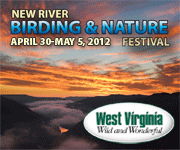Great Crested Flycatcher Family Photos
Thursday, July 7, 2011
Watching these great-crested flycatchers going about their business made me feel a little better about my life. They never sat still, either. Even when they paused in feeding or cleaning up after their young, they were always looking for the next insect to snatch in mid-air.
The rhythm of this old sycamore snag was so lovely, such a perfect spot for nesting flycatchers. This is eastern North America's only cavity-nesting flycatcher, which I suppose is because it's eastern North America's only flycatcher in the genus Myiarchus. Ash-throated and brown-crested flycatchers (also Myiarchus) nest in cavities in the West. I noted that the flycatchers had not added a trailing snakeskin to their nest. Most GCFL nests have something trailing out of the cavity. Popular speculation holds that the flycatchers are trying to "frighten off predators" with a snakeskin, but the first one I ever found, behind my house in Richmond, VA, had a long piece of pink attic insulation trailing out of the hole! They'll use plastic, bark...a lot of different materials, leading ornithologists to conclude that they just like to have something trailing out of the hole...I was privileged to watch that nest and even see the babies, perfect miniatures of the "Wheeps!" as we called their parents, line up on a branch outside the cavity to be fed.
North Bend's lake, less than a decade flooded, offers a paradise for cavity-nesting birds in its huge stand of dead trees, protected by several feet of water. This cuts down tremendously on snake and raccoon predation, and pretty much eliminates squirrel and mouse predation. It really is a Brigadoon for cavity-nesters.
I could tell the flycatcher babies were pretty old, both by their voices and by the size and coarseness of the insects being brought to them.
Not all the flycatchers' prey is winged. They do some gleaning, too. This might be a fishing spider, or a wolf spider. Whatever it is, it's a big 'un.
Imagine having something that leggy stuffed into your mouth.
With each delivery, the flycatchers took a drop-off.
Another fecal sac about to hit the water. Look at the beautiful rufous tail of the great-crested flycatcher..
More dragonfly on the way. The flycatchers followed a predictable pattern of perching, first pausing above the nest to assess the area, then dropping directly to the cavity.
Insert insect in slot.
Pause to consider your next move. Repeat.
The young will leave the nest at about Day 15, and be fed for about another three weeks. The literature says in general the young are flying strongly by that day. The only other option is a splashdown, and judging from the number of bass fishermen haunting the shallows, a struggling nestling wouldn't last long. I wish this beautiful family all the best. Feed 'em up!
|
Widget for blogger by Way2Blogging | Via Spice Up Your Blog Gadgets
|














5 comments:
Great shots of some very appealing birds.
Fecal sacs by mouth ... ugh.
It's good to be a primate sometimes.
wonderful post! love the photots of all thise delishious dinners they had. EuEEEwwWWWW
I paint folk art and birds are my fav thing to make..come check my blog out sometime! I know I will be back to yours
KAT
These pictures are terrific! You really did a great job capturing the bird doing their daily routines.
Julie, I think I saw one of these at my bog recently. I only saw it briefly when I had just arrived to count the birds and it flew off into the trees and disappeared but I remember thinking it looked like a Western Kingbird but there aren't Western Kingbirds in Andover, MA. then I realized it could be a Great-crested, but since I have only seen one once (and that was when I was in West Virginia at the New River Birding Festival) I was afraid to add it to my count. But, seeing your photos and reading about the habitat make it all fit! Perhaps I will get to see one again and maybe I will even have my camera with me to document it! That would be so great! Love this post! Thanks!
Great, great, great photos!! :-)
Post a Comment